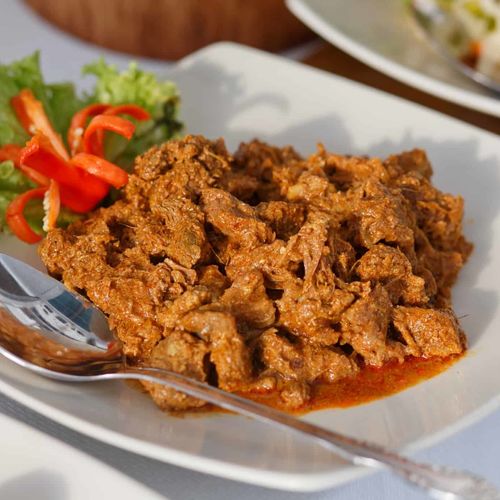-
Sous Vide Time and Temperatures
Sous Vide Time and Temps
Sous Vide Time and Temps
Sous Vide Temps
- All Sous Vide Temperatures
- Sous Vide Beef Temperatures
- Sous Vide Chicken Temperatures
- Sous Vide Duck Temperatures
- Sous Vide Fish Temperatures
- Sous Vide Vegetables Temperatures
- Sous Vide Infusions Temperatures
- Sous Vide Lamb Temperatures
- Sous Vide Pork Temperatures
- Sous Vide Shellfish Temperatures
- Sous Vide Turkey Temperatures
- Recipes Recipes Recipes Recipes
- Getting Started Guides Getting Started Guides Getting Started
- Equipment and Tools Equipment and Tools Equipment Equipment and Tools
- More Resources More Resources Resources More Resources
View All Cuts of Meat


Tenderness
Value
Leanness
When buying the foreshank make sure it is lean and muscular. It should also be in bright cherry red in color and shouldn't contain any excess liquid.
When cutting the foreshank, you can crosscut the whole thing which will make it easier to cook. Although you usually cook this cut by braising you can experiment with different seasonings, ingredients and recipes to get a variety of mouth watering dishes.
The beef in the foreshank contains high collagen that converts to gelatin when cooked. This is why it is excellent for making soup and stock. The grounded shank meat is also used to flavor consommés because the meat has a rich flavor and high collagen content.
Fore Shank

Information for Fore Shank
Cut Ratings
Flavor
Tenderness

Value

Leanness

Typical Cooking Methods
Braise
Other Names for Fore Shank
N/A
Good Substitutes for Fore Shank
Short ribs
Traditional Dishes for Fore Shank
Used to make various broth and soups
Beef Recipes
-
 Sous Vide French Dip Recipe
Sous Vide French Dip Recipe
-
 Sous Vide Juicy Lucy Hamburgers Recipe
Sous Vide Juicy Lucy Hamburgers Recipe
-
 Sous Vide Chuck Roast Medallions with Red Wine Mushroom Reduction Recipe
Sous Vide Chuck Roast Medallions with Red Wine Mushroom Reduction Recipe
-
 Sous Vide Beef Rendang Recipe
Sous Vide Beef Rendang Recipe
-
 Sous Vide Prime Rib Recipe
Sous Vide Prime Rib Recipe
-
 Sous Vide Gyro (Beef & Lamb) Recipe
Sous Vide Gyro (Beef & Lamb) Recipe
Description of Fore Shank
Foreshank is obtained from the front leg of the cow. The muscle in this area is well-exercised which makes the surrounding meat in the leg tough and lean with low fat content. Since this area contains lot of gristle and membrane, one needs to slowly cook it in liquid to make it tender enough to eat. You should remove as much gristle and membrane as you can from the foreshank before cooking, or ask the butcher to do it for you.When buying the foreshank make sure it is lean and muscular. It should also be in bright cherry red in color and shouldn't contain any excess liquid.
When cutting the foreshank, you can crosscut the whole thing which will make it easier to cook. Although you usually cook this cut by braising you can experiment with different seasonings, ingredients and recipes to get a variety of mouth watering dishes.
The beef in the foreshank contains high collagen that converts to gelatin when cooked. This is why it is excellent for making soup and stock. The grounded shank meat is also used to flavor consommés because the meat has a rich flavor and high collagen content.



















